Rear Wiper Suitability Calculator
Check Your Need for a Rear Wiper
Ever wondered why a rainstorm can turn the back window of a sedan into a blurry mess while an SUV seems to shrug it off? The answer isn’t just about brand preferences - it’s a blend of engineering, cost, and safety logic that has kept the sedan rear wiper off most designs.
What is a rear windshield wiper?
Rear windshield wiper is a small motor‑driven blade mounted on the rear glass of a vehicle, designed to clear rain, snow, or debris from the back window. It typically consists of a wiper arm, a rubber blade, and a compact motor. The system works just like a front‑wiper but is usually smaller and geared for lower speeds.
How sedans differ from other body styles
Sedan is a passenger car with a separate trunk compartment and a three‑box shape. In contrast, a SUV is a sport‑utility vehicle that blends passenger‑car comfort with higher ground clearance and a rear hatch and a hatchback is a car with a rear door that lifts upward, offering a larger opening to the cargo area. These shape differences matter because they affect rear window size, curvature, and the amount of airflow over the glass.
Engineering reasons behind the omission
Several practical factors keep manufacturers from fitting a rear wiper on most sedans:
- Rear‑window geometry. Sedan trunks usually have a small, steeply angled rear glass. Adding a wiper would require a motor that can reach a tight corner, increasing part count and assembly steps.
- Weight and cost. A rear‑wiper system adds roughly 3-5kg and $30‑$70 in parts. For a vehicle that sells in the $20,000‑$35,000 range, that extra cost can tip the scales for price‑sensitive buyers.
- Aerodynamics. The sloped rear of a sedan is designed to reduce drag. A wiper arm protruding into that airflow can increase the coefficient of drag (Cd) by 0.005-0.010, shaving off up to 1% fuel efficiency at highway speeds.
- Complexity of wiring. A rear‑motor needs a dedicated control module, often sharing a rain‑sensor signal. More wiring means more points of failure and higher warranty risk.
In contrast, SUVs and hatchbacks have flatter rear windows and larger rooflines, making the wiper arm easier to install without compromising aerodynamics.
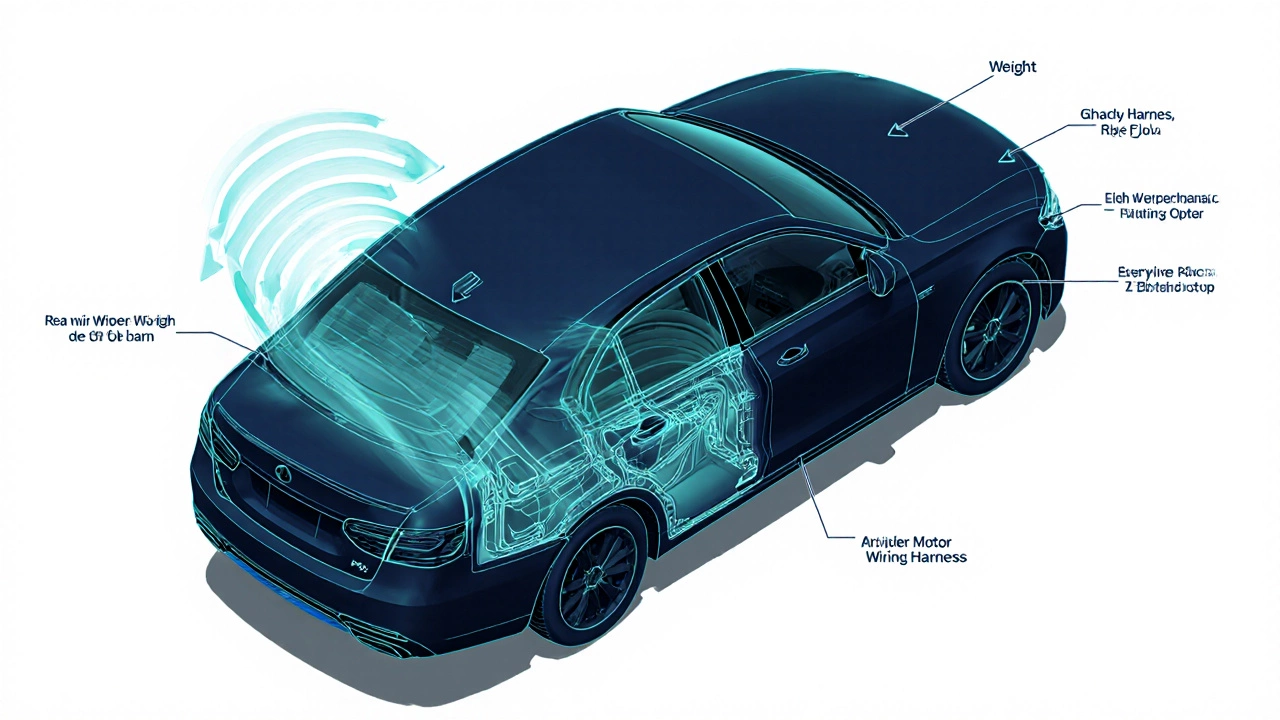
Safety and visibility alternatives
Rear visibility is still a safety priority. Manufacturers have tackled the issue with technology rather than a blade:
- Rear‑view camera is a sensor mounted near the rear bumper that streams live video to the infotainment screen, helping drivers see through rain‑soaked glass.
- Rain sensor is an infrared sensor that detects moisture on the windshield and automatically activates the front wipers. Some models extend rain‑sensor data to estimate rear glass moisture, prompting the driver to clean manually.
- Heated rear glass (common on higher‑end sedans) melts snow and reduces water buildup, eliminating the need for a moving blade.
These solutions cost less in the long run because they serve multiple functions-camera assists with parking, while heating and rain sensors improve driver comfort.
Regulations and standards
There’s no federal requirement in the U.S. or the EU mandating a rear wiper on passenger cars. The only legal stipulation is that any installed wiper must clear the view of the rear window sufficiently for safe operation. Since most sedans meet safety benchmarks without a rear blade, manufacturers stick to the cheaper, lighter alternatives.
Real‑world examples of sedans that do have rear wipers
Some market‑specific models break the rule, often because they target regions with heavy rain or snow:
- Toyota Camry (Japan domestic version) - offers an optional rear wiper on the 2‑door coupe variant.
- Hyundai Sonata (South Korea) - equipped with a rear wiper on the “Premium” trim for improved rear‑glass visibility.
- Volkswagen Passat (China) - includes a rear wiper as standard to meet local consumer expectations.
These exceptions illustrate that the decision is largely market‑driven, not a technical impossibility.
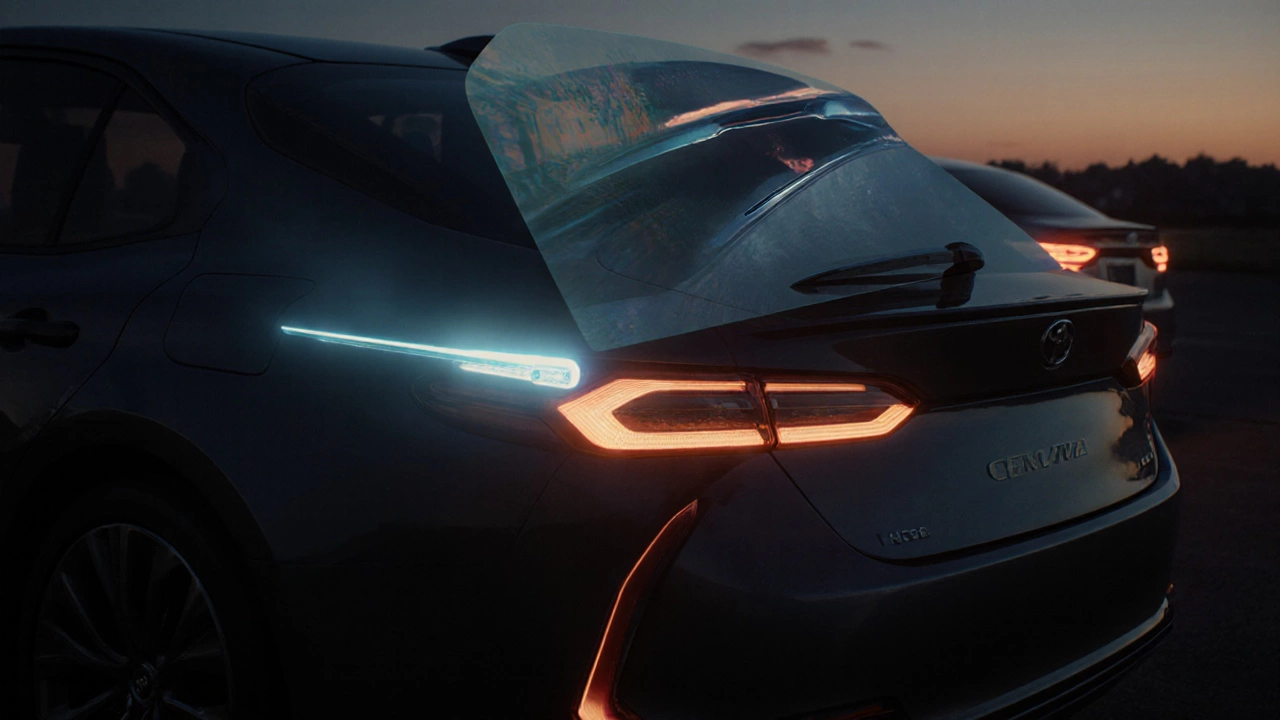
Comparison of body styles - rear wiper presence
| Body Style | Typical Rear‑Window Size (sqft) | Standard Rear‑Wiper | Alternative Solutions | Impact on Cd |
|---|---|---|---|---|
| Sedan | 1.2‑1.5 | No (rare exceptions) | Rear‑view camera, heated glass | +0.000 (no wiper) |
| SUV | 2.0‑2.5 | Yes (most models) | Rain sensor, camera | +0.006 (wiper arm) |
| Hatchback | 1.8‑2.2 | Yes (many models) | Rear‑camera, rain sensor | +0.004 |
| Coupe | 1.1‑1.3 | No | Heated glass | +0.000 |
Checklist: When a rear wiper might make sense on a sedan
- Live in a region with >150rainy days per year.
- Frequently drive a sedan with a large rear glass (e.g., luxury models).
- Do not have a factory‑installed rear‑view camera.
- Prefer a manual cleaning solution over electronic alternatives.
If you tick most of these boxes, a retrofit kit is available from niche suppliers, but expect a $150‑$250 price tag and possible warranty considerations.
Next steps and troubleshooting
Thinking about adding a rear wiper yourself? Here’s a quick road map:
- Confirm the rear glass is flat enough for a wiper arm. Curved glass often requires custom brackets.
- Buy a retrofit kit that includes a motor, arm, wiring harness, and control switch.
- Disconnect the battery, then mount the motor under the trunk lid following the kit’s instructions.
- Run the wiring to the vehicle’s fuse box, preferably tapping into the front‑wiper circuit with a relay.
- Test the system at low speed, check for noise or interference with the rear lights, and tighten all fasteners.
If the wiper stutters, it’s usually a voltage drop - add a dedicated relay or upgrade the fuse. Persistent squealing? Replace the rubber blade; it wears faster on rear glass due to lower tension.
Frequently Asked Questions
Do all sedans lack rear windshield wipers?
Most mainstream sedans ship without a rear wiper, but a handful of market‑specific trims do offer one as an option or standard feature.
Can I install a rear wiper on my sedan?
Yes, aftermarket kits exist, but installation can be tricky because of limited space and wiring integration. Consider professional installation.
Why do SUVs usually have rear wipers?
SUVs have larger, flatter rear windows that collect more water, and the added drag from a wiper is less of a concern due to their broader shape.
Are rear‑view cameras a complete replacement for rear wipers?
Cameras improve visibility but can still be obscured by heavy rain or snow. Some drivers combine a camera with a rear wiper or heated glass for best results.
Will a rear wiper affect my fuel economy?
A small increase in drag (about 0.005Cd) can cost roughly 1% of fuel efficiency at highway speeds - barely noticeable but measurable.
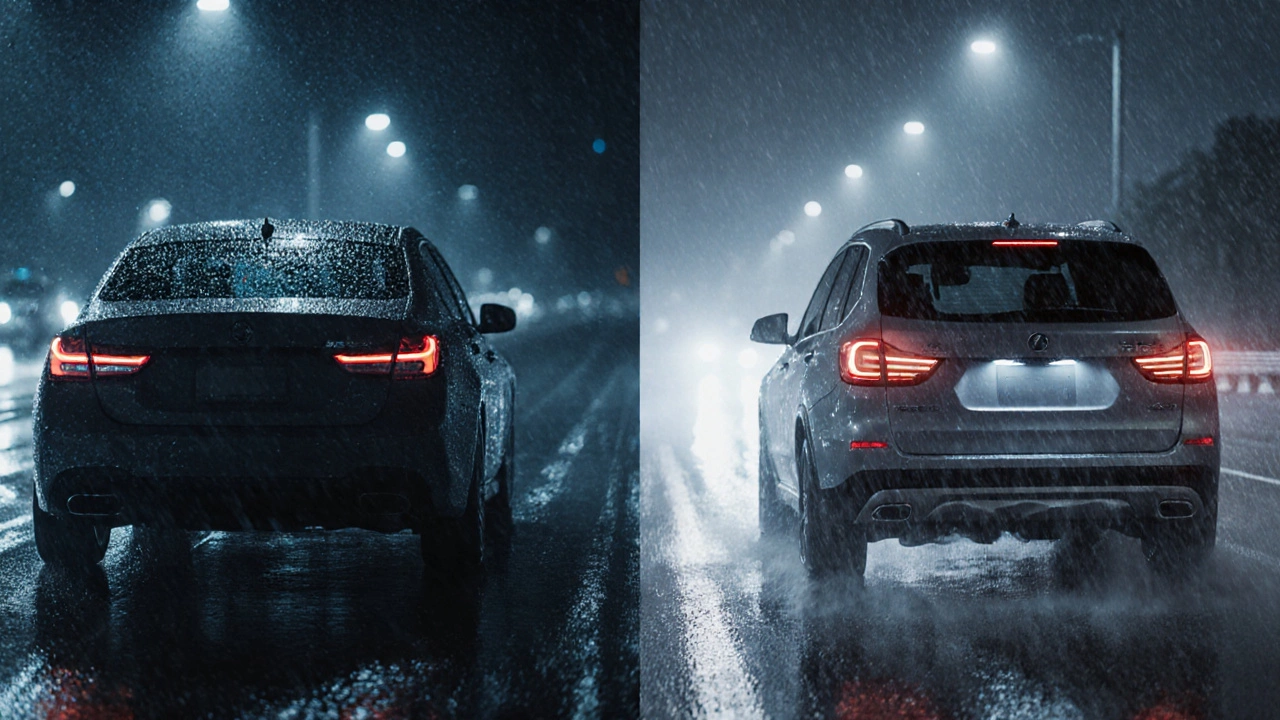
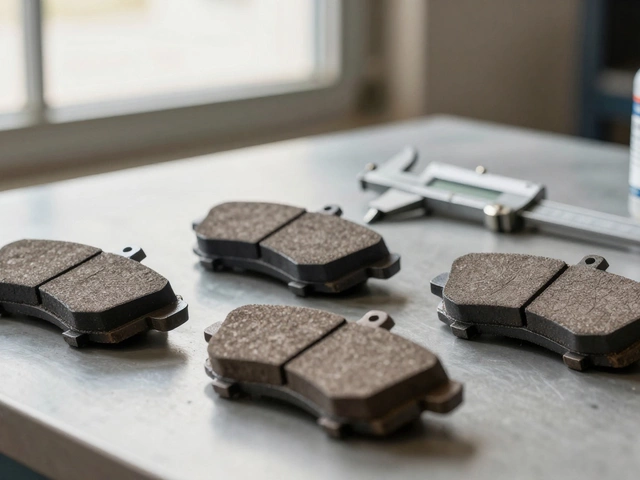

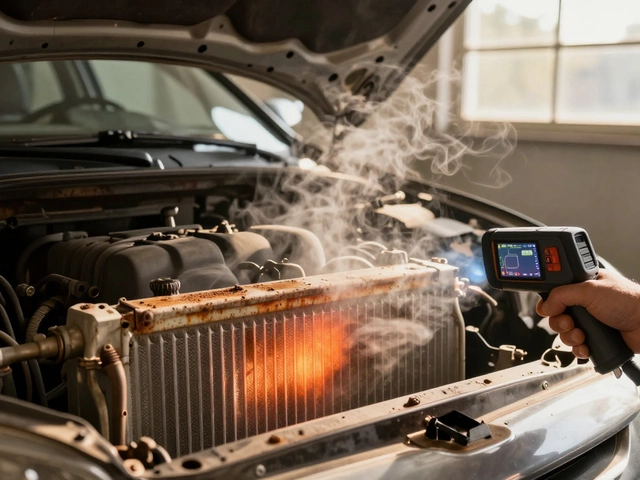

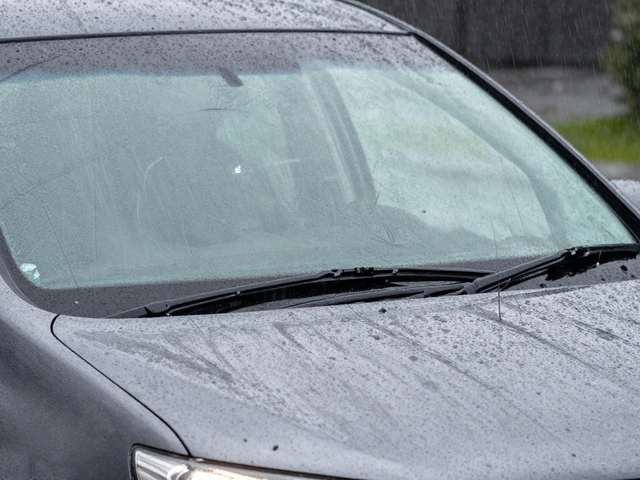
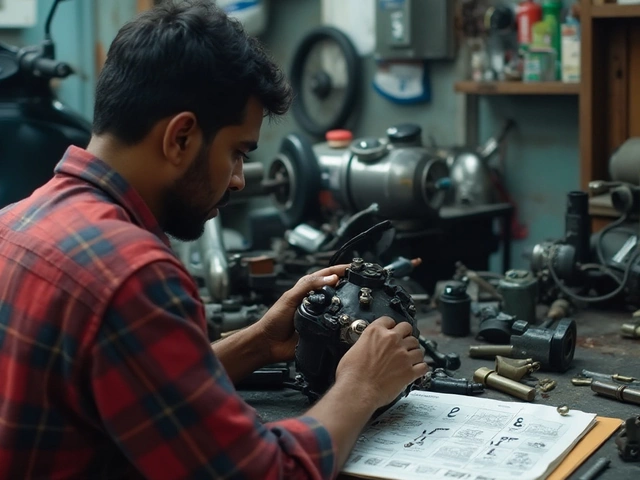



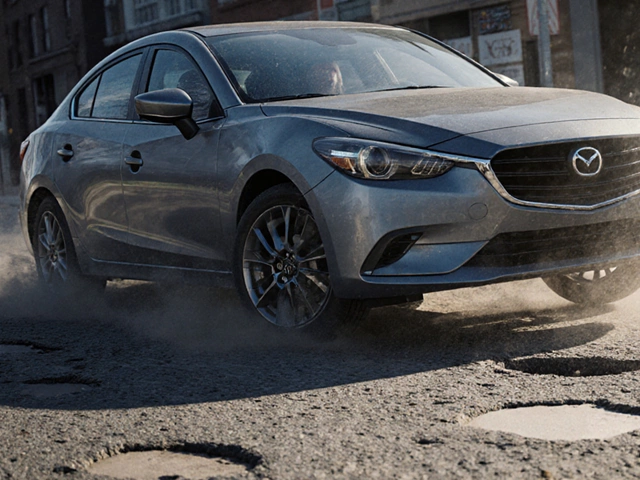
Write a comment